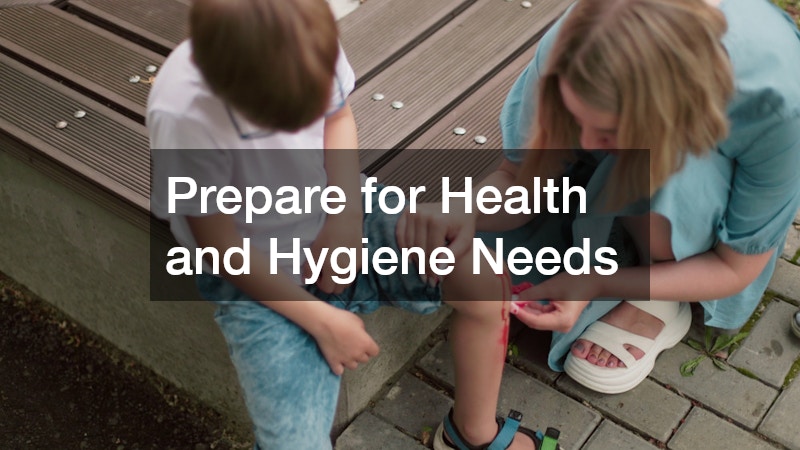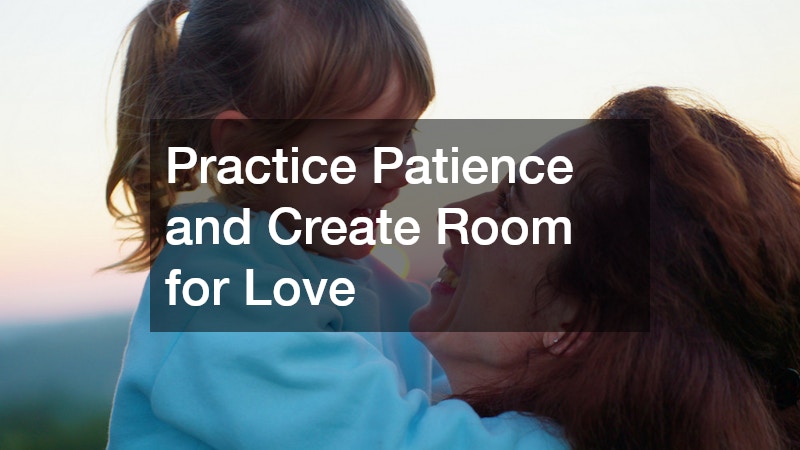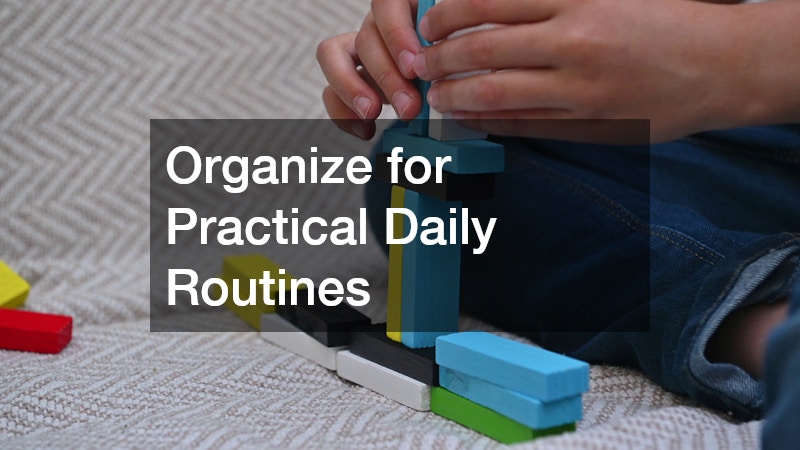Adopting a child is a life-changing decision, and preparing your home for a growing family is one of the most exciting—and important—parts of that journey. Whether you’re adopting your first child or expanding your household further, thoughtful planning helps ease the transition and create a nurturing, welcoming environment. A well-prepared home supports a child’s emotional, physical, and developmental needs while also helping parents stay organized and confident in their new roles.
The journey to adoption is complex, full of emotional highs, waiting periods, and meticulous logistics. While prospective parents work closely with a local adoption agency, there’s a significant focus that must also be placed on transforming your living space into a safe, comforting, and functional home for a new child. From bedrooms and play areas to safety considerations and emotional bonding spaces, preparing a home for adoption means tailoring every corner with intention and love.
This blog provides ten detailed, practical strategies to help growing families ready their homes for adoption. We will walk you through how to make room—physically and emotionally—for your child. Along the way, we’ll integrate expert recommendations for safety, emotional readiness, development, and more, ensuring that your home isn’t just a roof over their head but a place where your child can thrive.
This guide also highlights key lifestyle features—from residential security systems to children development tips—that can enrich your home environment and strengthen your readiness as a growing family. Let’s explore what it takes to make room for love, connection, and growth.
Design a Functional, Child-Friendly Space
Creating a space that is both functional and welcoming is essential when preparing for a growing family through adoption. Begin by choosing a bedroom that can be easily tailored to your child’s age and needs. Include items that offer both comfort and safety, such as soft bedding, sturdy furniture, blackout curtains, calming wall colors, and safe electrical outlets.
This is also the time to consider installing a residential security system to give you peace of mind. Security features such as child monitoring, motion sensors, and smart locks add an extra layer of protection. These systems can also be integrated with mobile devices, allowing you to stay connected and in control wherever you are. Additionally, planning for future flexibility—such as converting a guest room or office into a playroom—can be helpful as your family continues to grow.
A well-organized and safe space supports children in adapting more quickly and comfortably. Add thoughtful touches like personalized name signs, sensory items, or cozy rugs to make the room feel warm and inviting. Ultimately, preparing your home for a growing family starts with creating an environment that says, “You belong here.”
Organize for Practical Daily Routines
Structure is incredibly important for children—especially during transitional times like adoption. When preparing for a growing family, think about how your home supports everyday routines. Set up clear, consistent spaces for daily tasks like eating, playing, learning, and relaxing. Predictable routines foster a sense of control and emotional security in children.
Designating storage bins for toys, labeling drawers for clothes, and organizing kitchen and dining areas helps children understand where things go. Consider involving your child in small organizing tasks to make them feel part of the household. This participation not only builds confidence but also strengthens their connection to the home environment.
Incorporating children’s development resources such as books, sensory toys, or learning materials within reach can help support cognitive growth from day one. You can also create visual schedules or daily checklists to encourage independence and communication. Stability and order offer emotional reassurance to adopted children, and it reinforces your role in providing safety and predictability as part of their new growing family.
Personalize the Space for Emotional Bonding
Adoption is not just a physical relocation—it’s an emotional journey. To help support bonding and emotional growth, personalize your child’s space. Display framed family photos, offer cozy reading nooks, and create calming corners that encourage rest and mindfulness. Soft lighting, plush pillows, and familiar scents can enhance the sense of security.
Partnering with a photography company to capture special family moments early on can be a great way to document this new chapter and make your home feel more unified. These images help children see themselves as part of the family story and build emotional continuity in unfamiliar surroundings.
As your growing family takes root, providing emotionally resonant touches makes your child feel like they truly belong. Include their name in wall art, display their artwork, or create a memory box for shared experiences. Create a space that’s not only safe and functional but also reflective of the love and connection that defines a family.
Prepare for Health and Hygiene Needs

Health and hygiene become top priorities when adding a child to your growing family. It’s vital to make sure bathrooms, kitchens, and play areas are cleaned regularly and well-stocked with age-appropriate hygiene supplies. Keep disinfectant wipes, baby-safe soaps, and extra towels easily accessible for quick, daily use in high-traffic areas.
Including first aid kits and using medical skin adhesives for minor cuts or scrapes can be a smart addition to your home medical supplies. Safety gates and childproof cabinet locks can help prevent accidents in bathrooms and kitchens. Consider adding corner guards and outlet covers for additional peace of mind.
When creating a child-safe environment, remember to inspect for mold, allergens, and other irritants that may affect a child’s health. Maintain proper ventilation and use air purifiers if necessary. A healthy home reinforces the comfort and trust that’s essential for every member of your growing family.
Consider Outdoor Play and Safety
A safe and inviting outdoor area is a wonderful addition for a growing family. Backyards or shared play areas can become key spots for connection, exercise, and creative exploration. Consider age-appropriate playsets, safe fencing, and shaded spaces for comfort. Incorporate soft ground surfaces like mulch or rubber mats to prevent injuries.
If you have an in ground swimming pool, ensure it’s protected with barriers, alarms, and covers. Pool safety is non-negotiable when welcoming a young child. You might also consider swim lessons or flotation devices as added precautions. Additionally, explore options like swimming pool water recycling systems to reduce environmental impact while maintaining clean and safe water. Provide space for activities like sandbox play, gardening, or biking to stimulate development.
The outdoors becomes another room in your home—a space for bonding, play, and discovery. Add seating areas for parents and children to enjoy quality time together. As you prepare for adoption, include outdoor safety and engagement in your planning.
Adjust Spaces for Flexibility and Growth
One of the most important aspects of preparing your home for adoption is creating flexible spaces that can grow with your child. As your growing family evolves, bedrooms may need to transition from nursery to homework hub, and playrooms may shift into reading or tech zones depending on interests and age.
Choose furniture and storage that’s adaptable, such as convertible cribs, expandable desks, or modular shelving. Add multifunctional pieces like ottomans with storage or fold-out tables. Consider open floor plans that allow room to change based on the family’s needs, and use neutral color palettes that can easily transition as children grow.
The concept of a growing family isn’t just about numbers—it’s about designing a home that evolves with each chapter of life, supporting your child through every milestone and memory. Flexible environments foster creativity, independence, and a lasting sense of comfort.
Tap Into Community and Education Resources

Involving your child in community and educational environments is critical for social development. As your growing family adjusts, look for local private schools that align with your values and support diverse student needs. Prioritize schools that emphasize inclusivity, emotional intelligence, and individualized learning paths to support your child’s unique background and strengths.
Connecting with schools early gives you time to explore teaching styles, extracurriculars, and support services. Tour campuses and speak with administrators to understand the culture and expectations. Consider proximity to your home and how school schedules will impact your daily routine, including transportation logistics and after-school care options.
Supporting your child’s integration into educational settings from the beginning helps build consistency and social comfort. Strong community ties also reinforce your child’s sense of stability within your growing family. Encourage participation in school events, family nights, or parent-teacher associations to stay involved and connected throughout their academic journey.
Prepare for Family Activities and Leisure Time
As you welcome a new child, planning meaningful activities can foster deeper connection. Having options for shared experiences is key to nurturing a growing family. Create dedicated zones in your home for movie nights, arts and crafts, reading time, or board games that encourage creativity, cooperation, and relaxation for everyone.
You can also consider local outings like working with a local boat dealership to rent or purchase a small boat for weekends on the water. If your family enjoys being outdoors, visiting lakes and parks or using boat dock supplies to maintain a family dock can create lasting traditions and shared adventures.
In-home and outdoor bonding activities provide chances to laugh, communicate, and create memories. Planning ahead ensures every family member feels included and valued.
Create a Smooth Transition with Professional Guidance
Working with professionals is an essential step in preparing for adoption. Collaborate with your local adoption agency to ensure you’re meeting legal, emotional, and logistical requirements. Agencies often offer resources like training sessions, support groups, and post-placement counseling to help you feel supported throughout the process and beyond.
While preparing your home for a growing family, your agency can help you better understand what the child may need, how to introduce them to your household, and how to navigate early behavioral responses. They can also provide valuable insights into attachment, trauma, and developmental stages.
These expert services help normalize the adjustment period and keep parents well-informed. They also give adopted children a stronger, more prepared foundation—starting with the home you build for them. Their guidance ensures that the transition is as smooth as possible for both parents and children.
Practice Patience and Create Room for Love

More than anything, preparing for a growing family means creating emotional space for patience, love, and learning. No amount of paint, furniture, or organizing replaces the need for consistency and empathy. It’s the willingness to grow together, adapting to new challenges with an open heart and a sense of trust.
Your child may come with complex emotions or trauma that will require time and understanding. In these moments, focusing on empathy instead of perfection allows your family to grow authentically. Recognize the beauty in imperfection and celebrate every small victory. Embrace the process, knowing that each step brings your family closer.
The home you prepare for adoption should reflect your family’s love, resilience, and readiness to embrace a new beginning. A growing family isn’t just a status—it’s a commitment to nurturing one another through every stage, offering unconditional support, and creating lasting memories.
Preparing your home for adoption is a deeply personal and rewarding part of building a growing family. It’s about more than redecorating or childproofing—it’s about intentionally creating a space where your new child can feel safe, loved, and at home. Each decision, from selecting a bedroom to choosing a residential security system, becomes a part of your family’s story.
Throughout this guide, we’ve explored practical strategies for structuring routines, prioritizing health and safety, fostering emotional connection, and integrating your child into a vibrant, supportive environment. Whether you’re tapping into community resources like local private schools, designing for development, or simply finding time to make memories on the water with help from a local boat dealership, each effort matters.
Working with a trusted local adoption agency ensures you’re equipped to meet your child’s evolving needs. Including flexible spaces, supportive routines, and emotional bonding opportunities allows your home to evolve alongside your growing family.
Above all, keep in mind that adoption is not a single event—it’s a lifelong journey of growth, love, and shared discovery. By taking the time to prepare your home with intention and care, you’re sending a powerful message to your child: You are welcomed, cherished, and forever a part of this family.





